Belfast native David Ashe retired to Normandy, France, and became a champion for visiting GIs who had liberated his adopted homeland during World War II.
In September 2011, Guy Whidden, a World War II veteran from Frederick, Maryland, peeled off his 101st Airborne Division jump jacket in the men’s room of the Normandy American Cemetery in Colleville, France. Whidden next shucked a polo shirt, emblazoned with the image of a deployed parachute and the words “502 Normandy Holland,” and handed it to David Ashe. Standing in his undershirt, the elderly vet commanded, “You will earn this in the next week.”
Ashe, a retiree from Belfast, spent the next three days helping Whidden locate the graves of comrades and to decorate them with French and American flags. In a ritual often observed by relatives and friends, the two men applied damp sand from Omaha Beach to the lettering on each headstone.
The episode is typical of Ashe’s relationship with Whidden and other American veterans. They call him “Irish Dave;” he calls them “the boys.” He has hosted several in his home in Normandy, served as “go-fer” during their stays in France, and joined them at military reunions and D-Day re-enactments in the United States. He maintains contact through e-mail and trans-Atlantic phone calls.
Their bonds were forged during Ashe’s ongoing project to honor the Yanks who liberated Ravenoville, his adopted village in Normandy.
A self-described “blow-in who came to live in France,” the Belfast native chose to retire in Normandy after numerous pleasant vacations there. Reasonable real estate prices drew him to Ravenoville, a village of about 260 residents, and so Ashe built his retirement home there in 2009.
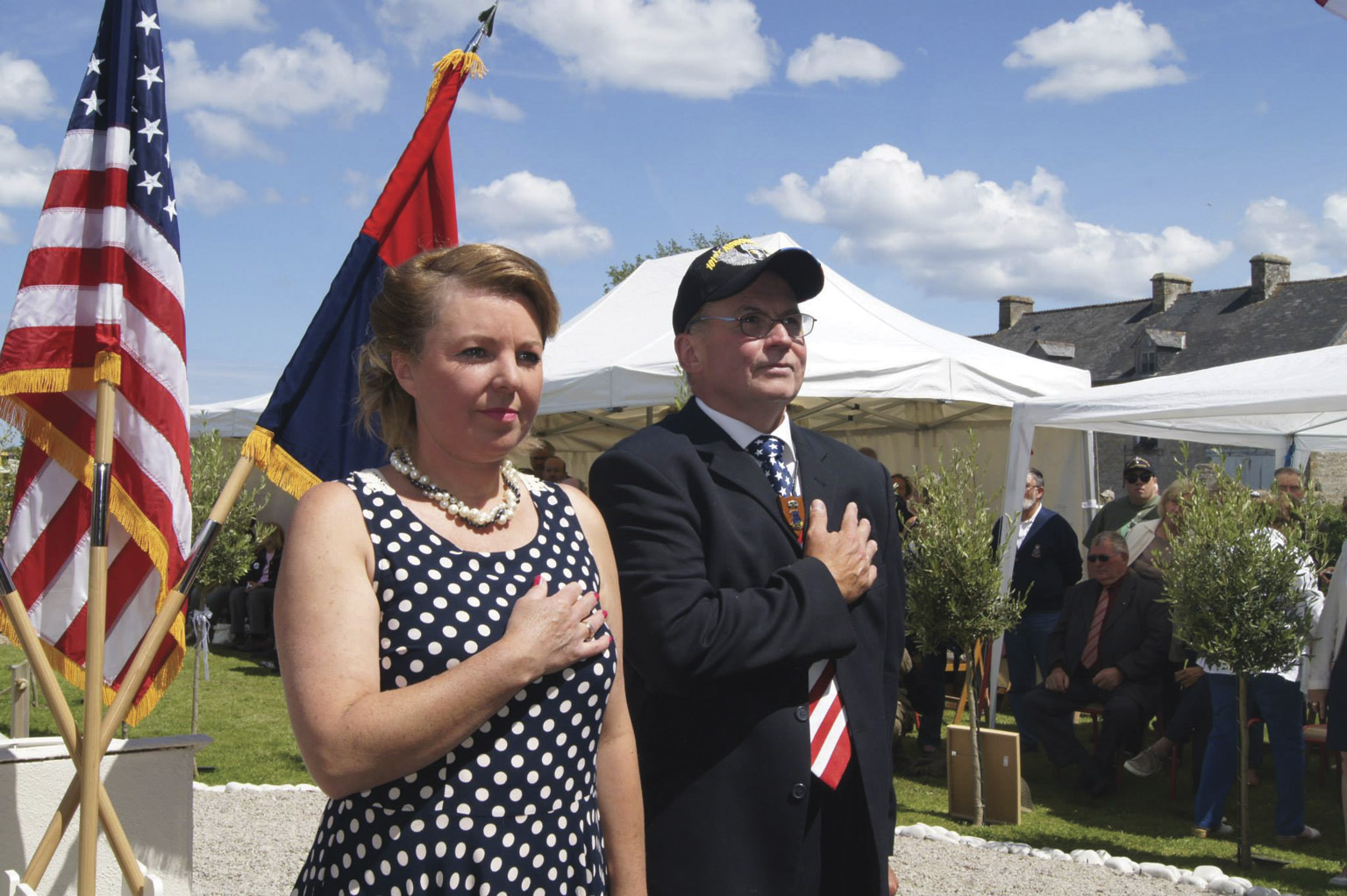
Having read Currahee!, the wartime memoir of Donald Burgett who fought at Ravenoville, Ashe knew his adopted home figured among the first liberated towns. Curious, he quizzed his neighbors about that time.
“I learned there had been a battle over two days for my village, between American paratroopers and the German garrison. By sheer coincidence, the field that I bought on the eastern fringe of the village just happened to be where the fight began on D-Day.”
On June 6, 1944, a battle erupted in buildings across the street from Ashe’s current property and in adjacent fields, including the land on which his house now stands.
“In the ditch bordering the road, I found parts of a German rifle, grenade, and perhaps most importantly, Garand clip loaders and spent cases – evidence of the fight right outside what today is my front door,” Ashe says.
During previous sojourns in France, he had befriended Bob Murphy, a veteran of the 82nd Airborne Division who survived the battle for nearby Sainte-Mère-Eglise. Ashe did not question Murphy about his wartime experiences. Little by little, however, he learned more about the ordeal Allied troops suffered during the invasion. He felt a growing respect for Murphy and other former G.I.s he encountered.
Ashe believed the men who fought for Ravenoville deserved recognition. Because of the tiny community’s significant D-Day history and the absence of any memorial to its liberators, he resolved to offer one on his own property.
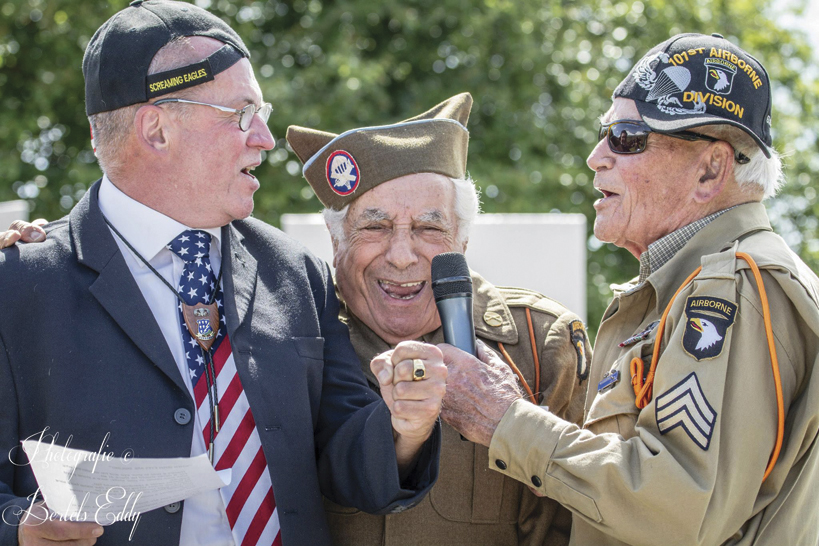
Ashe then embarked on a 15-month quest to identify the paratroopers who saw combat at Ravenoville or on nearby Marmion farm back in June 1944. This entailed tracking down men from both the 82nd and 101st Airborne Divisions. In the chaotic hours after they jumped into enemy territory, members of both groups stumbled upon one another and then fought the Germans side-by-side. Ashe found their names by poring over George Koskimaki’s D-Day with the Screaming Eagles and other personal accounts. He studied well-researched histories, such as Mark Bando’s 101st Airborne: Screaming Eagles at Normandy and Joseph Balkoski’s Utah Beach. In addition, Ashe consulted researchers, museum curators, online forums, and the National Archives and Records Administration. To date, he has identified 96 of Ravenoville’s liberators.
Ashe contacted veterans still living, and relatives of those who had died. Judy Cahoon Egan, whose late father fought at Ravenoville, caught Ashe’s enthusiasm and assisted him in the search. Nancy Donovan Gooding, the daughter and niece of World War II veterans, also pitched in.
Meanwhile, Ashe designed and set about building the monument.
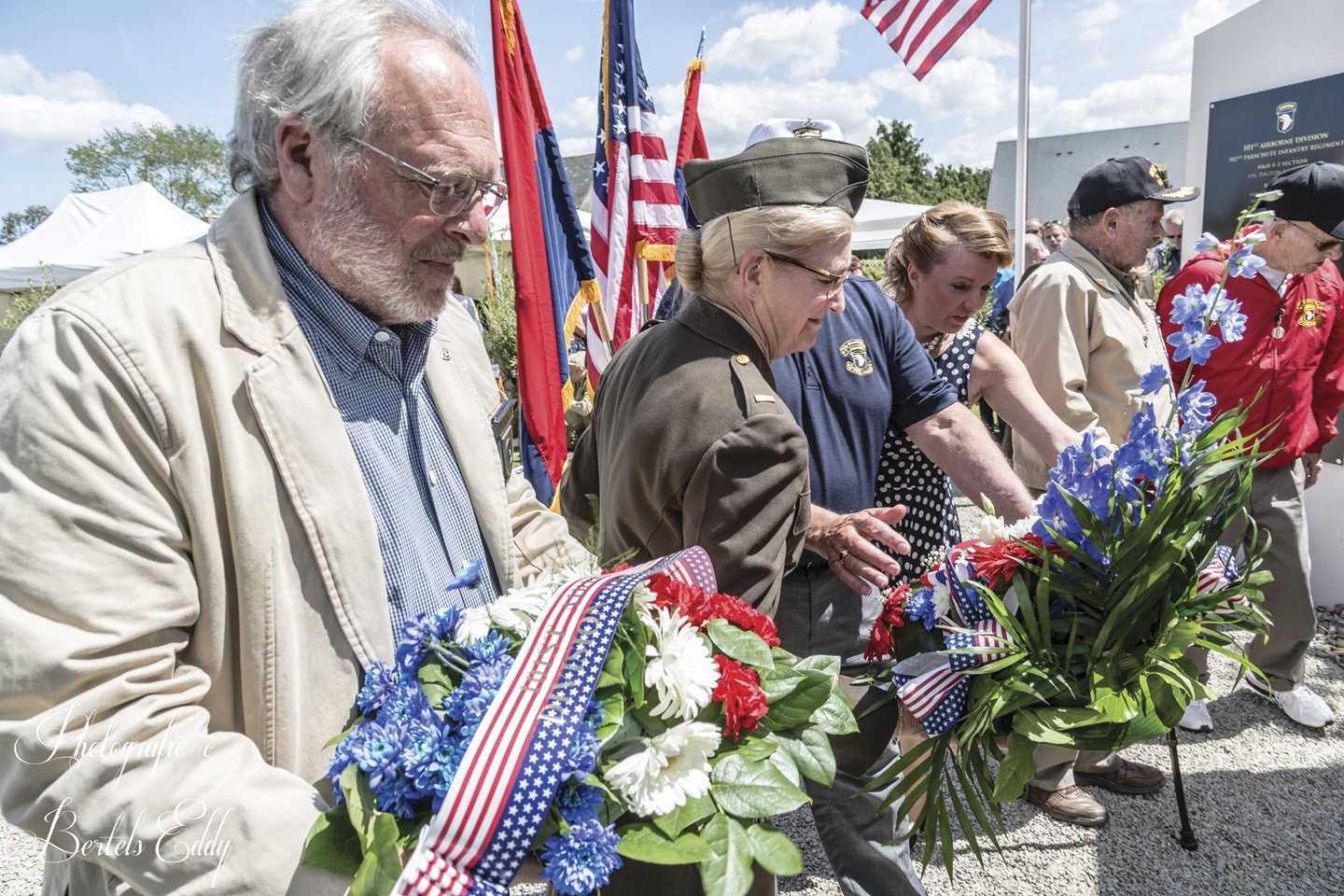
“The memorial is heavily laced – deliberately – with symbolism,” Ashe says. “It faces east, toward Utah Beach, from where the seaborne reinforcements came – the cavalry if you like – to relieve the airborne troopers.”
A short plaque recounts, in French and English, the story of Ravenoville’s liberation. Behind it loom three columns listing the paratroopers who liberated the village. One panel acknowledges the men who died there, and Ashe included the names of other liberators who survived that battle only to be killed elsewhere in Europe. He notes that tourists visit the beaches as historically important locations, and they learn about D-Day in museums. But for many soldiers, the invasion was just the beginning of months of combat.
“For these guys who lived through D-Day, each day thereafter, until the war’s end . . . was another D-Day,” Ashe says.
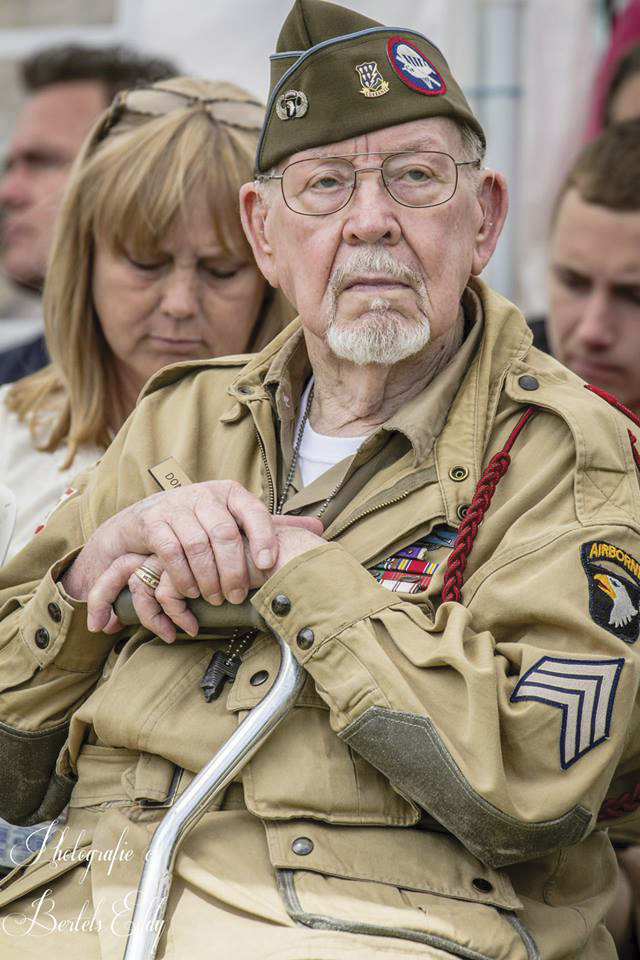
Ashe chose the dimensions of a 1944 American parachute – 28 feet in diameter – for the circular base on which he set the columns in an arc. He repeatedly drove his battered Peugot 106 to Utah and Omaha Beaches to retrieve sand for the foundation and stones to outline the base. He surrounded the columns with pebbles he fetched from the beach below the Normandy American Cemetery.
“I built the entire memorial with my own two hands,” he says of the project he calls “a labor of love.”
“I dug the foundations, removed the earth a wheelbarrow-load at a time, mixed the concrete, laid the foundations, built the columns, rendered them, built the catwalk decking walkway, shoveled tons of gravel, and planted the memorial conifers.”
Ashe says he wanted “individual, living memorials” to the men who didn’t go home, and so he lined 18 conifer trees directly opposite the columns.
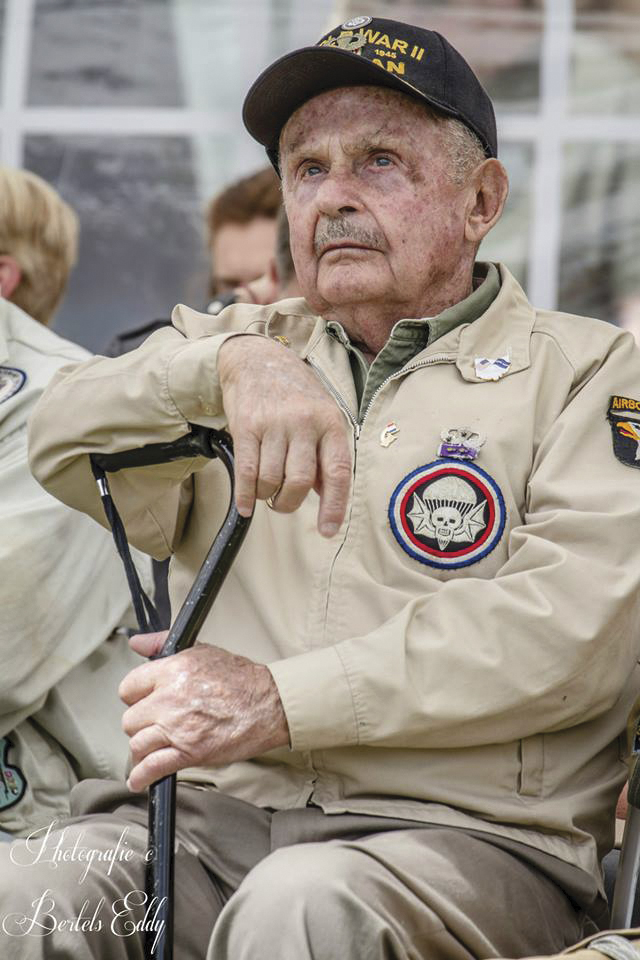
“The trees face west, towards the memorial and beyond, toward America,” he says.
At the foot of each conifer, Ashe placed a plaque indicating the name, rank, unit, and date of death of one of the Americans killed. A nineteenth tree represents the unidentified dead of Ravenoville.
“To this day, no one knows exactly how many Americans or Germans died,” Ashe says.
By the time Ashe erected the monument, he had located nine living liberators of Ravenoville. Only Donald Burgett could travel to France for Ashe’s dedication of the Ravenoville Eternal Heroes Memorial on June 6, 2012. In the course of his research, however, Ashe has become close to veterans like Robert Noody and Daniel McBride, who fought on D-Day but not at Ravenoville.
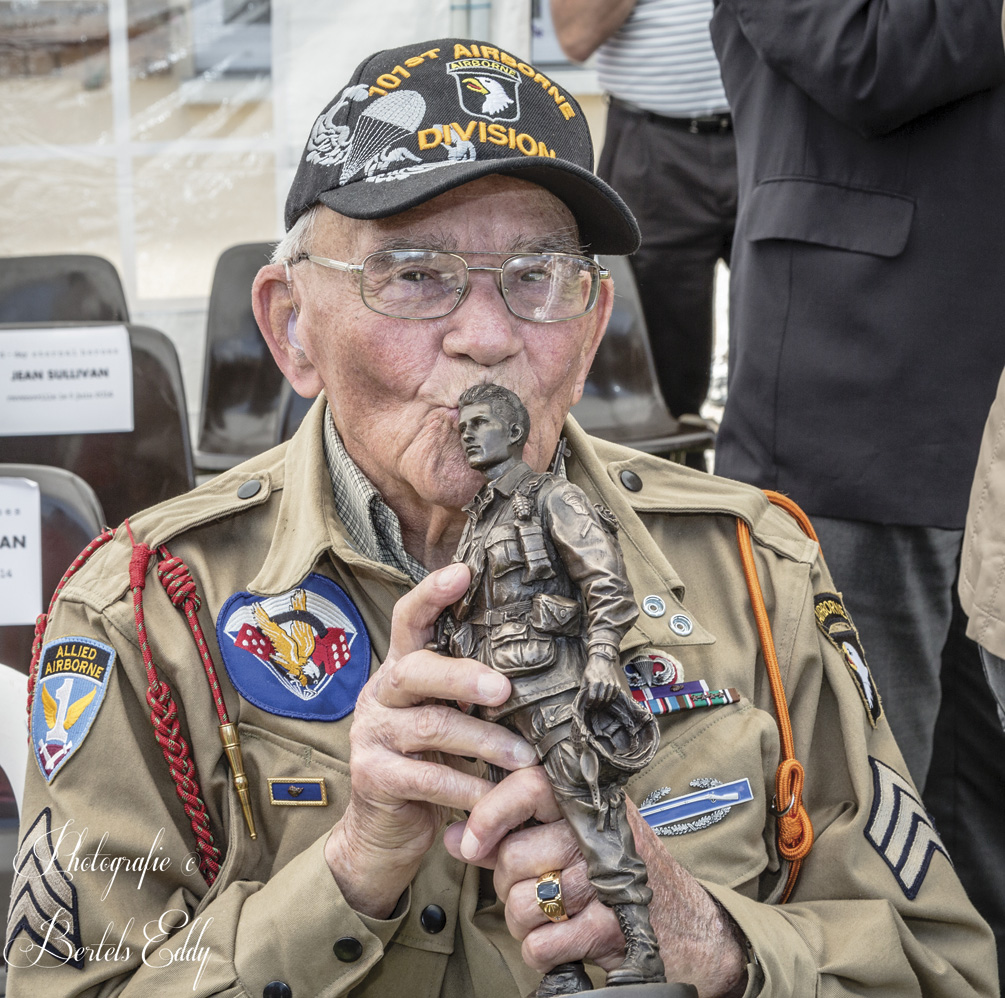
With Ashe’s encouragement, Noody, McBride, and several others attended the inauguration.
Ashe co-organized the event with his partner, Céline Schwab Lautour. They decided to invite Johannes Börner, a German veteran of the Normandy campaign. Börner eventually was captured, and like many Germans, remained a prisoner long after the war ended. He settled in France, married, raised a family, and operated a restaurant.
“Peace is a very strong element of the memorial, peace and reconciliation,” Ashe says. “What better way than to introduce a German paratrooper to American paratroopers who had fought one another 68 or 69 years before?”
“The boys welcomed him,” he says of the Americans’ reaction. “They all said after the ceremony, ‘a paratrooper is a paratrooper.’”
For the dedication, and at annual D-Day observances since then, Ashe developed certain protocols. He always introduces the veterans to the crowd and the vets always place floral wreaths at the monument. Everything is conducted in both French and English, and opera singer Lorraine Rowan sings “The Star Spangled Banner” and “The Marseillaise.” The 101st Airborne Association sends a representative every year.
Last year, 400 people turned out to honor the veterans at the Memorial on June 5. Guests included Brigadier General (U.S.A.R., Ret.) Theodore Shuey, Major General Richard Thomas, and John Beyrle, former U.S. Ambassador to Russia, whose late father was a paratrooper in the 101st Airborne Division. In addition to re-enactors wearing World War II-era American uniforms, 25 active duty German paratroopers attended.

Ashe permits impromptu additions to the program, such as his and Noody’s Blues Brothers’-style rendition of “When Irish Eyes Are Smiling.”
“There’s a lot of informality,” Ashe says. “We do it the Irish way. And it seems to work.”
In contrast to official events throughout Normandy, attendees do not have to wait for hours to shake hands with former GIs or to thank them for their role in World War II. The audience easily connects with the Americans.
Last year, 89-year-old Vincent Speranza asked to read a four-page poem about his experiences during the Battle of the Bulge.
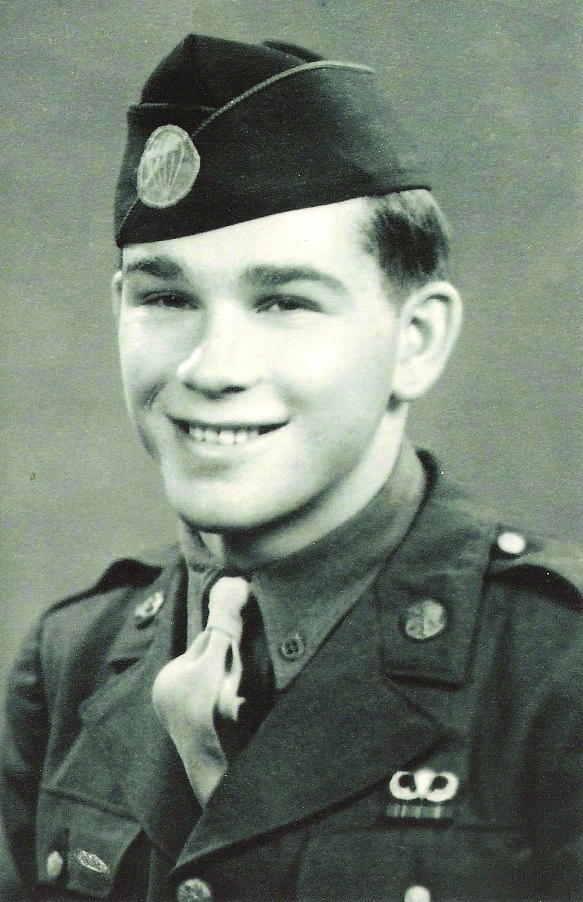
“He took the microphone, stood in the center of the memorial, and I held his cane while he read,” Ashe recalled. “And everybody cried.”
After the inaugural ceremony in 2012, Ashe expanded his tribute to include other former soldiers, his friends who had not been involved with the liberation of Ravenoville.
“I wanted to honor them while they are still here,” Ashe says. “I hit upon an idea. Why not plant olive trees for each one of these guys, to represent peace and eternity?”
On June 5, 2013, many of his friends returned to ring the memorial with olive trees. In some cases, a son or daughter planted the tree in memory of a deceased veteran. Ashe later installed plaques relating each

man’s name, D-Day rank and unit.
Ashe plans to erect a bronze statue of an American paratrooper facing the Memorial as though he were reading the names upon it. In 2013, just weeks after the annual ceremony, Ashe received a surprise visit from the family of Corporal Ollie Barrington. They made the pilgrimage to see the tree Ashe planted in honor of Barrington, who survived the fighting for Ravenoville, but was killed in Belgium that December during the Battle of the Bulge.
The group proudly showed Ashe photographs of the 23-year-old paratrooper. Ashe instantly realized Barrington’s face was ideal for the bronze statue. With the family’s cooperation, he commissioned a prototype modeled after Barrington, naming it “The Last Full Measure” in a nod to Lincoln’s Gettysburg Address. In

2014, Ashe gave statuettes with Barrington’s likeness to the deceased paratrooper’s 93-year-old sister and 31 other veterans or their relatives who attended the annual ceremony in Ravenoville.
Ashe, who has already spent $10,000 of his own money on the memorial, finds himself engaged in a new battle – one against time. Hoping to raise funds for the life-size statue while veterans are still living to see it, he sells the statuettes for $150 each.
“If I had the money, I would build this yesterday for these boys,” he says. He notes that four men died in the year after trees were planted at the memorial in their honor.
Ashe ensures that all the vets know how he feels about them, and he telephones Noody and McBride almost every week.
“I tell them I love them each time I end any conversation,” Ashe says. “These guys are closer to me than family.” ♦
|
|
_______________
|
|
Jerri Donohue is a freelance writer in Brecksville, Ohio whose work has appeared in regional, history and religious publications. Her favorite subjects always relate to World War Two.
David Ashe launched a Facebook page for the memorial. For more information or photos, visit: facebook.com/RAVENOVILLE-44-THE-ETERNAL-HEROES-MEMORIAL/.

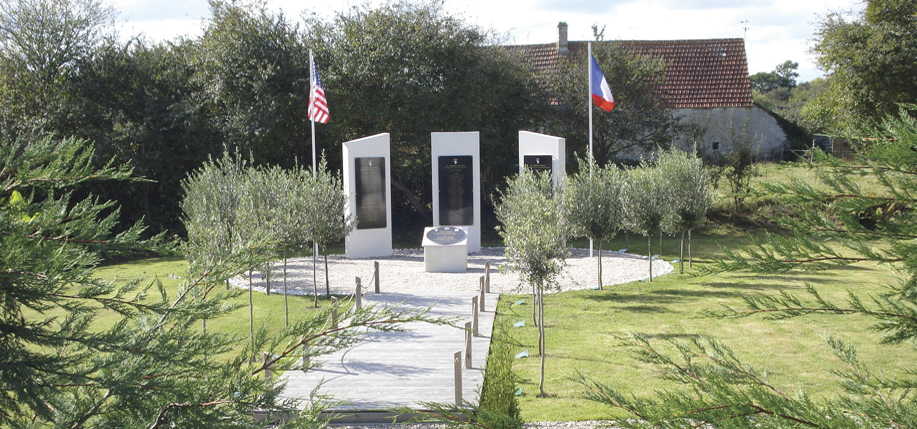
Leave a Reply